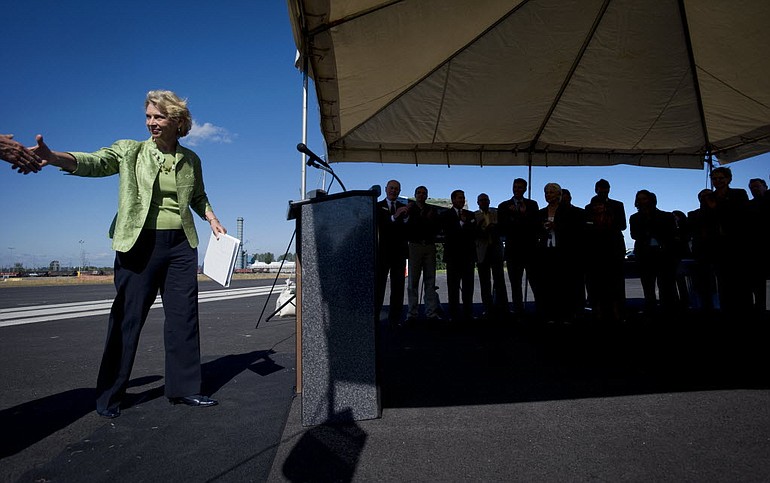The Port of Vancouver turned the spotlight on itself in two big ways Wednesday, announcing that it’s working on a deal with a global company to build a new export facility and welcoming a visit from Gov. Chris Gregoire, who touted that deal and other work by the port to create jobs.
The port has reached a preliminary agreement with BHP Billiton, a global mining company, under which the company would build an export facility at the port’s Terminal 5 to ship fertilizers for crops. The port continues to negotiate the project with BHP, and hopes to finalize terms of the deal and have a lease agreement in place by early 2012, Larry Paulson, executive director of the port, said Wednesday.
Paulson said the cost of the project has yet to be determined. Likewise, the number of jobs it would produce also has not been settled. If all goes as planned, construction of the export facility “probably” would finish in 2014, Paulson said, with it going into operation in 2015.
The project with BHP is significant, Paulson said, including the fact that it would eventually more than double the port’s cargo. The scope of the project “will surpass anything” the port has done previously, Paulson said, adding that “all I’m hearing from BHP Billiton is it will happen.”




